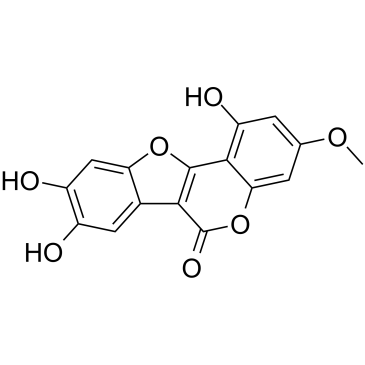Apoptosis is induced in Chlamydia trachomatis-infected HEp-2 cells by the addition of a combination innate immune activation compounds and the inhibitor wedelolactone.
Wilhelmina M Huston, Sarina Gloeckl, Leonore de Boer, Kenneth W Beagley, Peter Timms
Index: Am. J. Reprod. Immunol. 65(5) , 460-5, (2011)
Full Text: HTML
Abstract
Innate immune activation of human cells, for some intracellular pathogens, is advantageous for vacuole morphology and pathogenic viability. It is unknown whether innate immune activation is advantageous to Chlamydia trachomatis viability.Innate immune activation of HEp-2 cells during Chlamydia infection was conducted using lipopolysaccharide (LPS), polyI:C, and wedelolactone (innate immune inhibitor) to investigate the impact of these conditions on viability of Chlamydia.The addition of LPS and polyI:C to stimulate activation of the two distinct innate immune pathways (nuclear factor kappa beta and interferon regulatory factor) had no impact on the viability of Chlamydia. However, when compounds targeting either pathway were added in combination with the specific innate immune inhibitor (wedelolactone) a major impact on Chlamydia viability was observed. This impact was found to be due to the induction of apoptosis of the HEp-2 cells under these conditions.This is the first time that induction of apoptosis has been reported in C. trachomatis-infected cells when treated with a combination of innate immune activators and wedelolactone.© 2010 John Wiley & Sons A/S.
Related Compounds
| Structure | Name/CAS No. | Molecular Formula | Articles |
|---|---|---|---|
 |
wedelolactone
CAS:524-12-9 |
C16H10O7 |
|
Understanding the mechanisms controlling Leishmania amazonen...
2014-08-15 [J. Infect. Dis. 210(4) , 656-66, (2014)] |
|
CYLD is a crucial negative regulator of innate immune respon...
2013-11-19 [Cell. Microbiol. 10(11) , 2247-56, (2008)] |
|
Demethylwedelolactone derivatives inhibit invasive growth in...
2012-10-01 [Eur. J. Med. Chem. 56 , 361-7, (2012)] |
|
Wedelolactone, a medicinal plant-derived coumestan, induces ...
2012-12-01 [Int. J. Oncol. 41(6) , 2191-9, (2012)] |
|
Anti-inflammatory gallic Acid and wedelolactone are G protei...
2012-01-01 [Pharmacology 89(3-4) , 211-9, (2012)] |